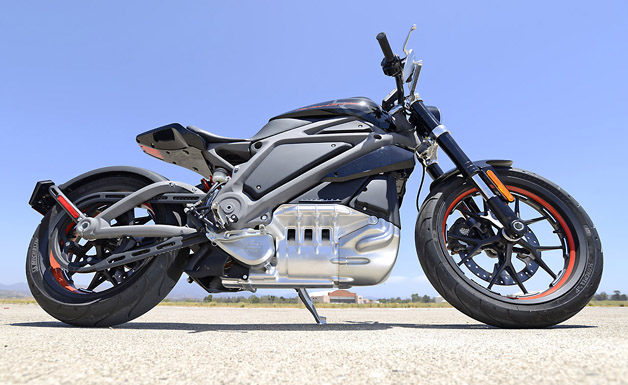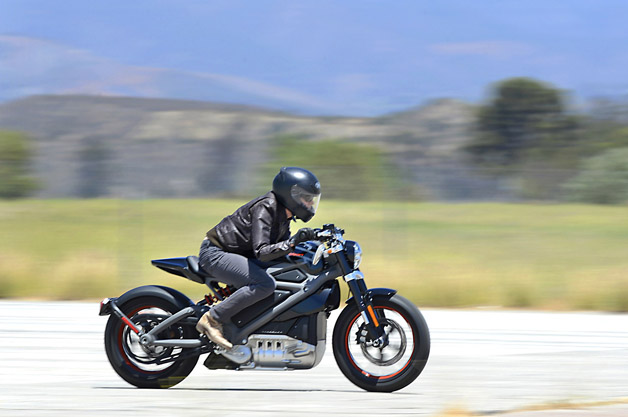Financially speaking, climate change risks to businesses haven't been very well understood. But a new report out this week offers one of the first true comprehensive assessments of the economic impacts of climate change on U.S. regions and industries.
The report, called
Risky Business, was advised by a number of heavyweights in economics and finance, including former Treasury Secretary Henry Paulson, former NYC mayor Michael Bloomberg, and billionaire political climate activist Tom Steyer, as well as numerous former U.S. Secretaries of Treasury, Housing, Labor, and State.
"We started from the premise that the vast majority of businesses make decisions on data, on sound analysis," explained Matthew Lewis, VP and director of communications at Next Generation, one of several partners that helped craft the Risky Business Project.
Instead of talking about whether climate change is happening and what's causing it -- "that ship has sailed," said Lewis -- this report moves on to explore what a continued business-as-usual scenario will do to various sectors' business interests.
In a webcast
unveiling the report's findings, Paulson, who as Treasury Secretary witnessed the 2008 financial crisis firsthand, said that the "climate bubble" is in many ways even "more cruel and perverse" because there's no government bailout to scoop away CO2 levels. What's especially important about this report, he said, is that it uses well-understood risk management methodologies that businesses already apply.
A cautious, wait-and-see, "business-as-usual approach is actually radical risk-taking,” said Paulson.
And those climate-change risks are beyond radical. The Risky Business report calls out several specific examples.
Coastal property and infrastructure: Billions of dollars are being invested in projects today that, with climate change and rising sea levels, could end up underwater, especially on the Southeast and Atlantic coasts of the U.S.
By 2050, $66 billion to $106 billion of coastal property could be below sea level, increasing to $238 billion to $507 billion by 2100. There's a 1-in-20 chance, the report calculates, that by the end of this century $701 billion worth of coastal properties will slip below mean sea levels, with another $730 billion at risk during high tide. Average annual losses due to coastal storms and hurricanes along the Gulf of Mexico and the Eastern Seaboard will swell by more than $42 billion due to sea level rise alone.
Risk Management Solutions (RMS), commissioned to help build this report, does catastrophe modeling for insurance, reinsurance, and investment-management companies. The firm hadn't overlaid projected sea level rises with storm surges until now – and the new “shocking” results found far more property at risk over the next three decades than previously believed, Lewis said.
The report makes another dark analogy: the likelihood of $700 billion in coastal property risks is roughly the same 1:20 odds that an American will develop colon cancer. And it’s twice the odds for melanoma.
Value of state property below mean sea levels, by 2050 and 2100. (Credit: Risky Business Project, data from Rhodium Group.)
Agricultural production: By 2050, Americans could see 27 to 50 days with temperatures soaring beyond 95 degrees F each year, three times the frequency over the past 30 years. By 2100, that could stretch to 45 to 100 sweltering days annually.
By the end of the century, the northwestern trio of Oregon, Washington, and Idaho could see more of those days than Texas does now. Forget about just being uncomfortable; not only is that extreme heat potentially deadly for humans, it could wreak havoc on everything from work productivity to transportation as it becomes "functionally impossible to be outdoors."
More broadly, extreme heat in the Midwest could vastly reshape the strategies for planting crops, shifting grain yields northward. Overall food supply will be maintained, but farmers will have to significantly alter their crop levels and strategies, with output of key crops likely shifted northward from traditional regions that have been economically dependent on them for generations.
This is already happening. A recent exhibit at the
Boston Museum of Science illustrated how rising temperatures are affecting hallmark New England industries of maple sugar production and Maine lobsters. Records displayed from a New Hampshire maple sugar operation over the course of 50 years unequivocally showed the season beginning and ending weeks later, with less favorable temperature profiles for production, and with the result that production is gradually shifting northward.
Electricity production and use: The energy industry already is already recognizing the impact that severe weather (especially heat) has on system performance, electricity availability and reliability. Higher peak demand ultimately could create the need for 95 gigawatts of new power generation capacity over the next 25 years, to ease already strained electric grids.
Lewis pointed to another worsening problem for the energy sector caused by climate change: water usage to help cool turbines, especially in areas already parched, is drastically increasing. Weeks of more severe heat weather will exacerbate what is already a worrisome problem, as illustrated by
a recent Department of Energy report.
If those end-of-century targets are too distant to contemplate, consider the report's five- to 25-year time horizons:
- Average costs of coastal storms, especially on the East Coast and Gulf of Mexico, could rise by $2 billion to $3.5 billion, with a total annual price tag for storms and hurricanes topping $35 billion.
- Some Midwestern and Southern regions could see declines in crop yields of greater than 10 percent.
- Nearly 100 gigawatts of new power generation capacity will be needed (roughly the equivalent of 200 coal- or natural-gas-fired plants), costing ratepayers up to $12 billion annually.
In the webcast, Paulson and fellow former U.S. Treasury Secretary Paul Rubin both underscored the need for companies to disclose their exposure to climate risks, much as the Securities & Exchange Commission already requires for various material items and risks. That means businesses need to better understand their various exposures, such as the costs to address carbon emissions, the value of stranded assets affected by new policies and vulnerable spots in their supply chains, especially in the most-affected regions. Given the scope of these risks, they also urged companies to form coordinated responses.
Some businesses do very much care what is happening with climate change, and have already started calculating risks, translating them to economic impacts and pursuing near-term strategies to help mitigate them. Swiss Re, for example, has been
evaluating the risks of climate change for several years, and earlier this spring
issued a report quantifying the impacts of weather-related disasters and how to price disaster risk.
"We want to start a broader conversation," Lewis said, extending the discussion of climate change to make connections between prolonged severe heat and rising sea levels, and areas such as labor productivity and crop production.
Companies probably don't understand their exposure to climate risk, and until a few years ago the modeling to support it didn't exist. But today "it's a knowable number, a range of probable outcomes," said Lewis. "We're on a pathway...and the science is really good [about] where that pathway leads."



















